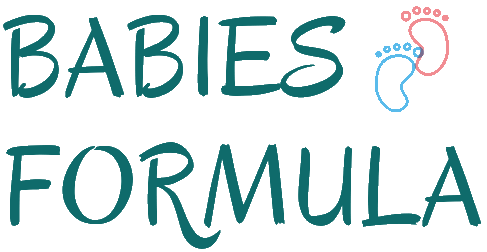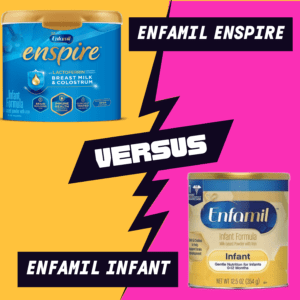Comparison Chart:

“When you buy something using my links, I may earn a small commission at no additional cost to you. This is a kind of support to me. This website doesn’t accept money for reviews. “
HiPP Dutch has three formulas for babies between 0-24 months which refer to three stages:
Stage 1 (0-6 months): Infant Formula
The first stage in the HiPP Dutch infant formula series is designed to provide the essential nutrients newborns (0-6 months) require during their first months of life. Tailored to mimic the composition of breast milk, HiPP Dutch Stage 1 is gentle on a baby’s delicate digestive system.
This stage is the only one that has L-Carnitine among protein content and ARA (Arachidonic acid) as a source of Omega 6.
Stage 2 (6-12 months): Follow-on Formula
As your baby crosses the six-month mark, their nutritional needs evolve to support their rapid growth and developmental milestones. HiPP Dutch Stage 2 takes into account these changing requirements. Now solid foods are introduced, thus you will notice that some vitamins either level-decreased or disappear because the baby takes them from solid foods to have a balance in nutrients.
Stage 3 (12-24 months): Toddler Milk
The transition from infancy to toddlerhood marks a time of tremendous exploration and development. HiPP Dutch Stage 3 is specially formulated to provide the necessary nutrients for your active toddler. This stage features an age-appropriate balance of carbohydrates, proteins, and fats, along with essential vitamins and minerals. The increased energy demands of a toddler’s active lifestyle are considered, ensuring they receive the support they need for healthy growth, cognitive development, and immune system strength.
All stages are GMO-Free, Soy-Free, Starch-Free, and have organic ingredients, also they have prebiotics/probiotics.
However, they are not FDA-approved because they didn’t meet some requirements like iron level.
Related: HiPP German Vs Dutch Vs UK: What’s The Difference?
Ingredients Comparison:
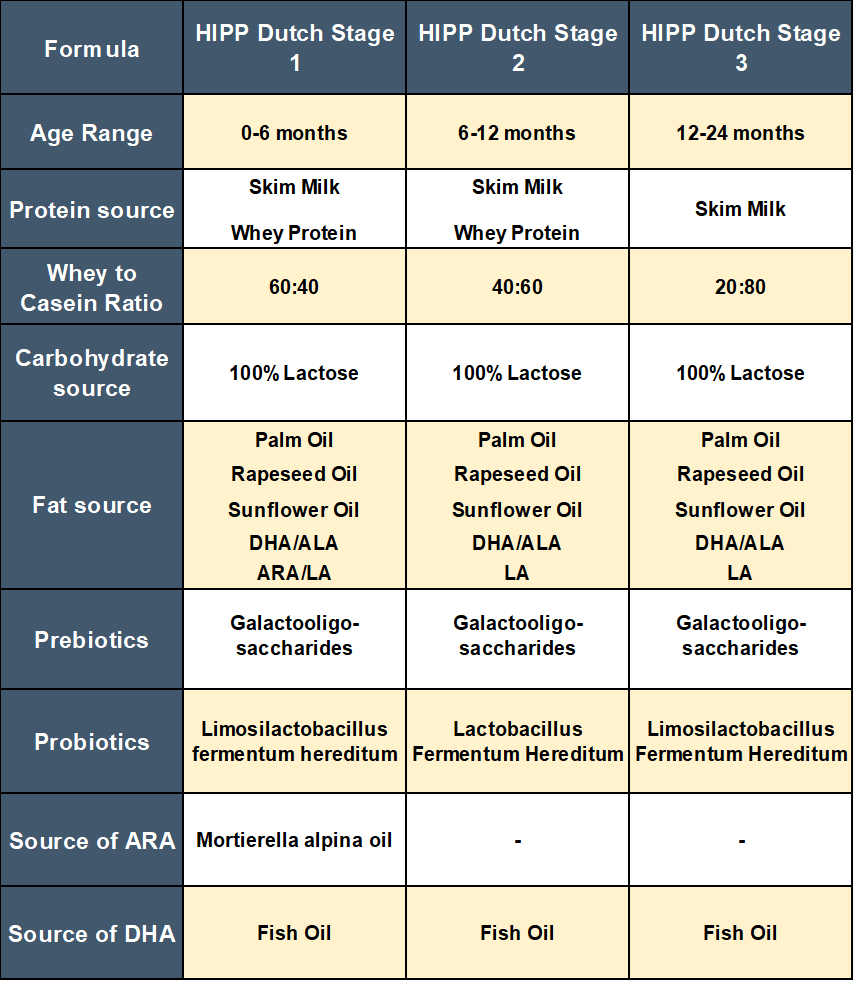
Protein Source:
Stage 1: This foundational stage introduces infants to a protein blend comprising both skim milk and whey protein. The whey-to-casein ratio is balanced at 60:40, emphasizing the benefits of whey protein’s digestibility. This ratio aligns with the gentle introduction of nutrition for newborns.
Stage 2: As babies progress to six months and beyond, Stage 2 adapts its protein composition. It maintains both skim milk and whey protein, adjusting the whey-to-casein ratio to 40:60. This shift recognizes the changing nutritional needs of growing infants and their increased intake of complementary foods.
Stage 3: The transition to toddlerhood brings about Stage 3, which shifts its protein source exclusively to skim milk. With a whey-to-casein ratio of 20:80, this stage acknowledges the energy demands of active toddlers and their evolving dietary preferences.

Carbohydrate Source:
From HiPP Dutch’s initial Stage 1 to its advanced Stage 3 infant formulas, a steadfast preference for organic lactose as the primary carbohydrate source underscores a dedicated embrace of natural and effortlessly digestible nourishment.
Whether addressing the needs of newborns, supporting the growth of babies aged 6-12 months, or nurturing toddlers beyond their first year, the consistent use of this premium carbohydrate source guarantees a gentle and recognizable energy provision, fostering an environment of optimal development.
Fat Source:
HiPP Dutch’s infant formula stages—Stage 1, Stage 2, and Stage 3—share a common base of organic fats: palm oil, rapeseed oil, and sunflower oil. However, Stage 1 uniquely incorporates Arachidonic Acid (ARA) to nurture early brain and vision development.
In Stage 2 and Stage 3, the consistent blend of organic oils continues to support balanced growth and energy needs as babies transition to solid foods and toddlers embrace active exploration. HiPP Dutch’s approach ensures a tailored fat source progression that aligns with the evolving nutritional requirements of infants and toddlers.
Related: HiPP UK Stage 1 vs Stage 2 vs Stage 3: What’s The Difference?
Nutrients Comparison:
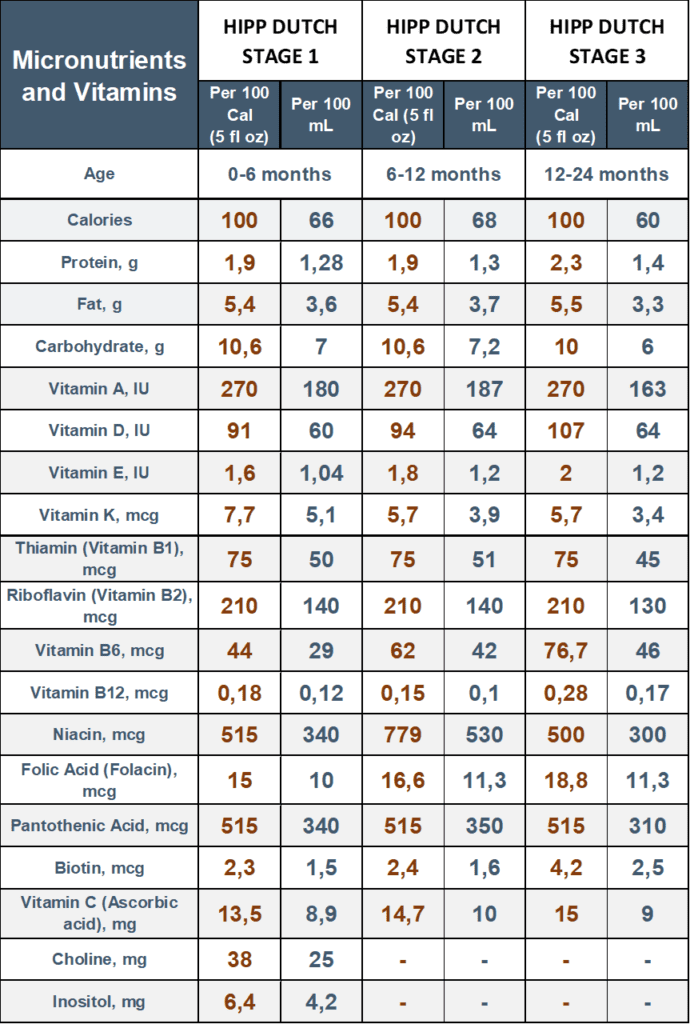
Micronutrients:
In terms of micronutrients, the protein source has been increased between Stage 1 and Stage 3 from 1.9g /100 Cal to 2.3g /100 Cal. The opposite thing happened to carbohydrates, they decreased from 10.6g /100 Cal to 10g /100 Cal. Fat remains almost the same in the three stages.
Related: HiPP German PRE Vs Stage 1 Vs Stage 2 Vs Stage 3: Full Comparison
Vitamins:
In terms of vitamins, there are some that remain the same in the three stages like Vitamin A which is essential for maintaining healthy vision, immune system function, and cellular growth, Vitamin B1 and Vitamin B2 which convert carbohydrates into energy and plays a crucial role in the proper functioning of the nervous system, and Pantothenic acid which is essential for the production of energy and the formation of red blood cells.
On the other hand, there are some vitamins that have been increased progressively between Stage 1 and Stage 3 like Vitamin D which is crucial for bone health as it helps the body absorb and utilize calcium and phosphorus, Vitamin E which is crucial for bone health as it helps the body absorb and utilize calcium and phosphorus, Vitamin B6 that plays a role in brain development and function, Vitamin B12 which is essential for the production of red blood cells, DNA synthesis, and proper nervous system function, Folic acid which is essential for proper cell division and the synthesis of DNA, Biotin which is involved in energy metabolism, and Vitamin C that contributes to a strong immune system and overall cellular health.
Whereas, some vitamins are reduced progressively between Stage 1 and Stage 3 like Vitamin K which is a vital nutrient that plays a crucial role in blood clotting and bone health. It is essential for proper coagulation, which prevents excessive bleeding and promotes wound healing
However, there are two vitamins that disappear in Stage 2 and Stage 3 like Choline and Inositol.
Inositol is an essential nutrient required by human cells in culture for growth and survival. Inositol promotes maturation of several components of surfactant and may play a critical role in fetal and early neonatal life
Source: National Library of Medicine
Minerals:
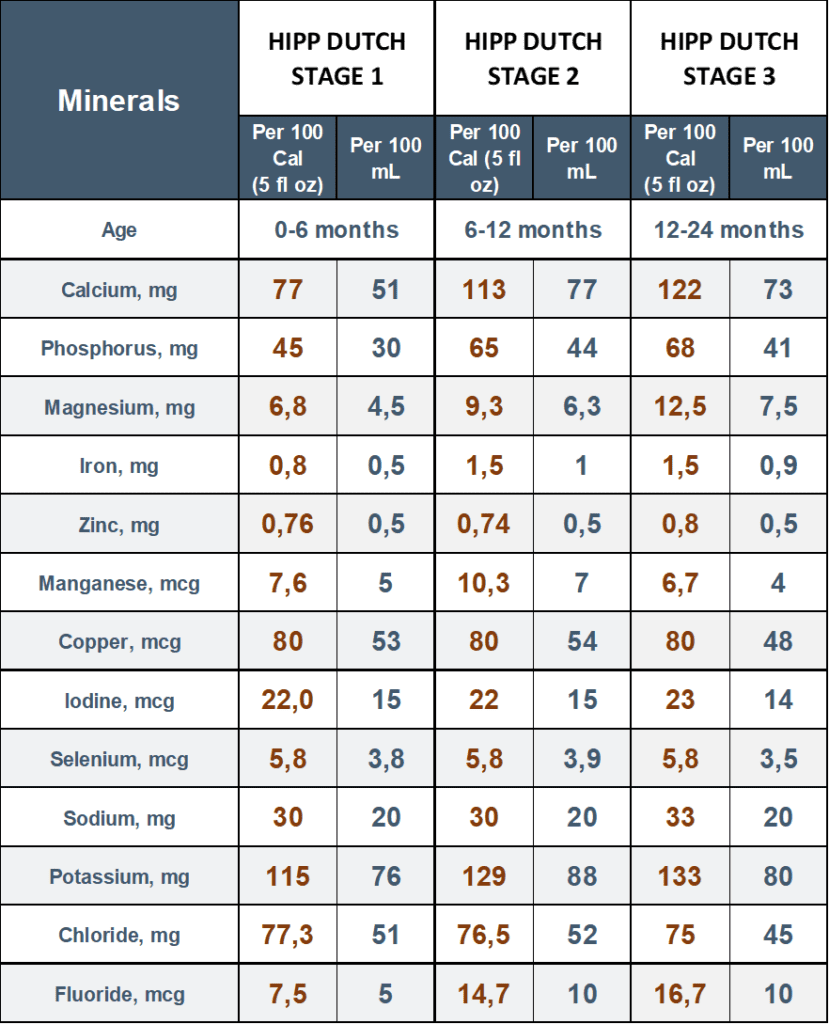
Regarding minerals, there are also some minerals that keep their level the same in all stages like Copper and Selenium whereas others are increased like Calcium, Phosphorus, Magnesium, Iron, Zinc, Iodine, Sodium, Potassium, and Fluoride to catch up with baby growth, and there are others that are decreased like Mangnese and Chloride.
Price Comparison:

All HiPP Dutch Stages have the same size (800g / 28.22 oz) and price which is 46.99$ (1.66 /oz)
Where to Buy?
Use this Promo Code to get 5% off on your orders: BABYFORMULA5
Conclusion:
This comparison underscores HiPP Dutch’s commitment to offering a holistic range of formula options that adapt to the unique stages of early childhood. The deliberate adjustments in protein sources and ratios align with infants’ developmental needs, ensuring that they receive optimal nutrition for their growth, immune system support, and cognitive development at every crucial phase.
HiPP Dutch’s meticulous approach exemplifies its dedication to providing parents with a reliable and informed choice for their child’s nutritional journey from infancy through toddlerhood.
